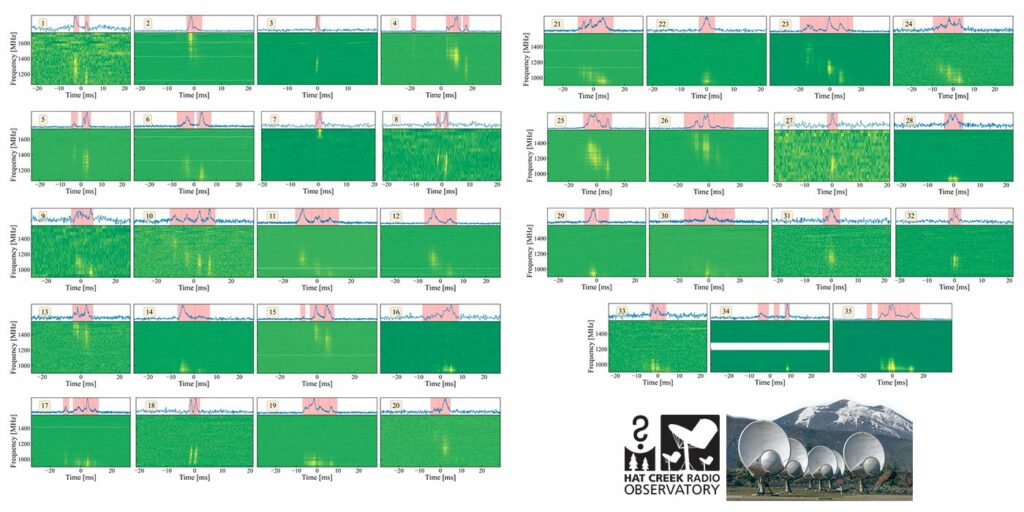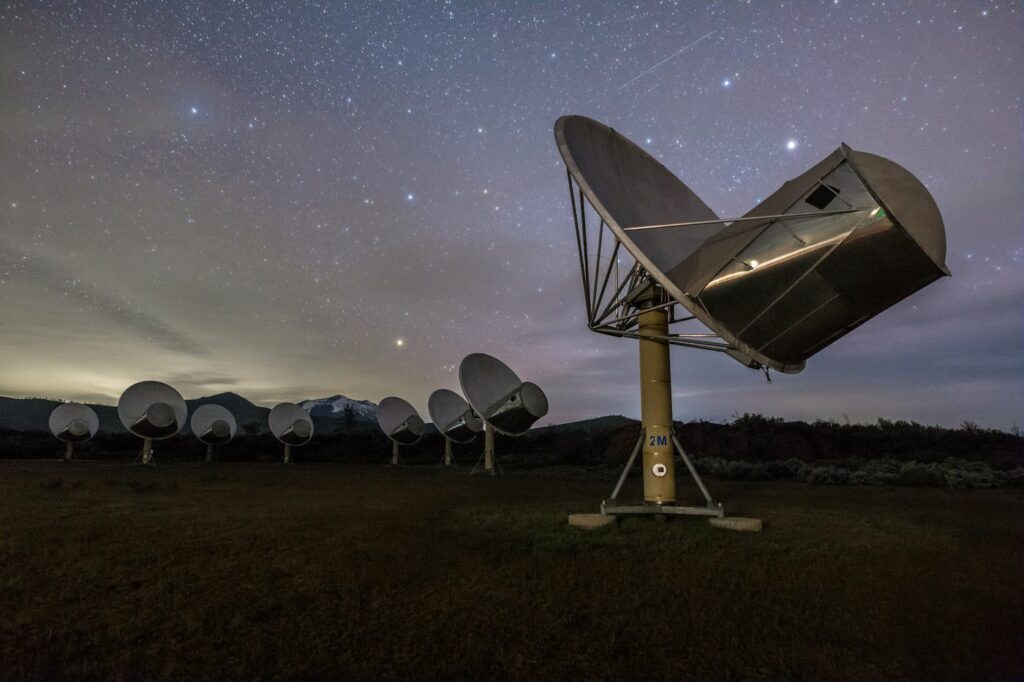A team of researchers at the SETI Institute have unprecedented clues about one of astronomy’s most perplexing mysteries: fast radio bursts (FRBs). FRBs are extremely powerful flashes of radio waves from deep space, lasting just milliseconds, whose origins remain unknown.
Through meticulous observation using the Allen Telescope Array (ATA), astronomers have gathered intriguing data on a repeating FRB, dubbed FRB 20220912A, offering fresh insights into these mysterious signals from deep space. The ATA, an array of 42 radio dishes, underwent significant upgrades to enhance its ability to observe the signals.
First discovered in 2007, fast radio bursts emit an enormous amount of energy despite their short duration. These bursts have puzzled scientists for over a decade, with theories about their origins ranging from colliding neutron stars to alien communications. However, one of the most promising leads in recent years has been the study of repeating FRBs, sources that emit these bursts multiple times.
Among the repeating fast radio bursts, FRB 20220912A stands out. This signal has been particularly active, providing a rich dataset for astronomers. The team observed the source for over 541 hours, recording 35 bursts — marking one of the longest and most detailed studies of a repeating FRB. These observations provided critical data on the properties of the bursts, including their duration, frequency, and the intriguing pattern of their emission.
The analysis of FRB 20220912A revealed several key findings:
- Spectral Characteristics: The bursts from FRB 20220912A showed a tendency to decrease in frequency over their duration, a phenomenon playfully termed the “sad trombone” effect.
- Energy Output: These bursts are incredibly energetic, with some emitting as much energy in a millisecond as the Sun does in several days.
- Repeating Patterns: Unlike most FRBs, FRB 20220912A repeated its bursts, allowing scientists to study the same source multiple times.
Unlike most radio waves, which have a single “pitch,” FRBs seem to span a whole range of frequencies, like a cosmic orchestra playing all the notes at once. Interestingly, all the bursts from FRB 20220912A were huddled at the lower end of the spectrum, each with its own unique musical fingerprint.

As if the shifting frequencies weren’t enough, the researchers noticed something truly bizarre: the bursts from FRB 20220912A seemed to change pitch over time, which they liken to a cosmic slide-whistle!” This was the first observation of its kind, adding another layer of mystery to the FRB puzzle.
These observations have significant implications for our understanding of FRBs. The precise nature of their origin remains a mystery, but the data from FRB 20220912A supports the theory that they might be linked to magnetars – highly magnetic neutron stars. The detailed study of the burst patterns and energy levels also provides vital clues that challenge some existing models and support others.
“This work is exciting because it provides both confirmation of known FRB properties and the discovery of some new ones,” said lead author Dr. Sofia Sheikh, a Postdoctoral Fellow at SETI, in a statement. “We’re narrowing down the source of FRBs, for example, to extreme objects such as magnetars, but no existing model can explain all of the properties that have been observed so far.”
The study of FRB 20220912A is just the beginning. With advanced facilities like the ATA, astronomers are poised to make more groundbreaking discoveries. Future observations may reveal more about the nature of these bursts and, ultimately, about the extreme conditions and environments where they originate.
“It is exciting to see the ATA engaged in FRB research three years after its refurbishment started,” notes co-author Dr. Wael Farah, a research scientists at the SETI Institute. “The ATA boasts unique capabilities that are being put at use in many research endeavors including fast transients.”
The research is published in the journal Monthly Notices of the Royal Astronomical Society.












